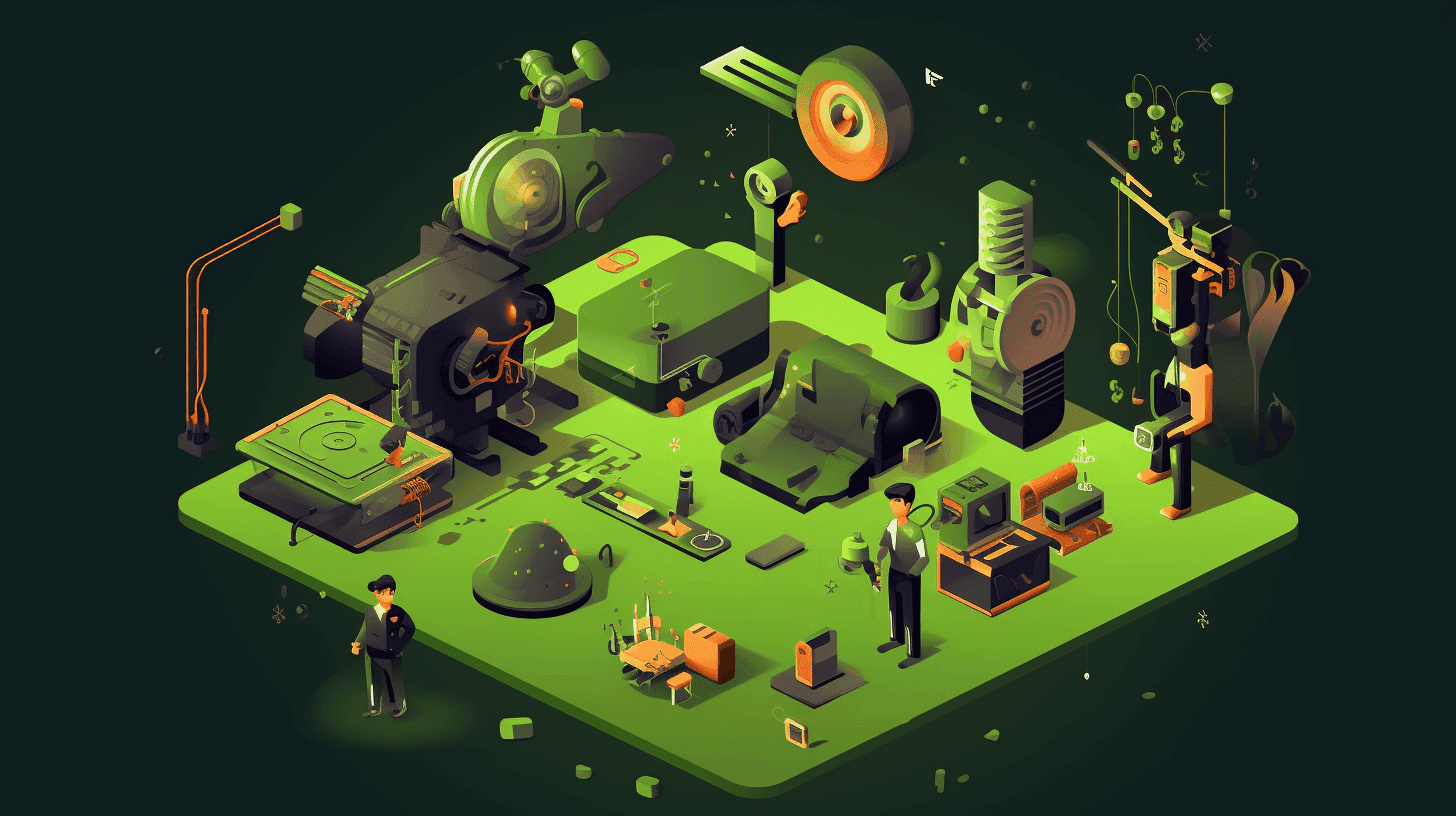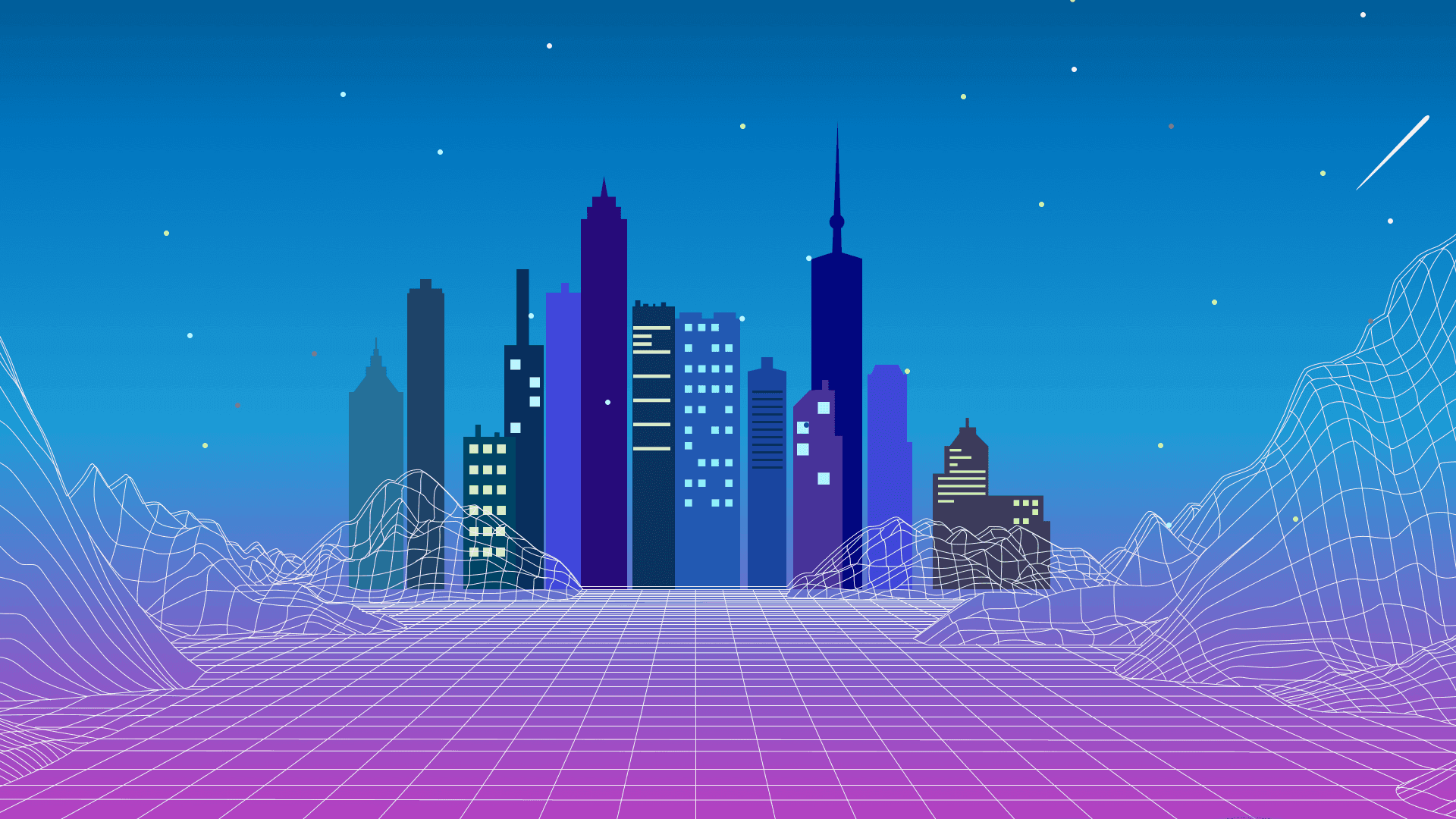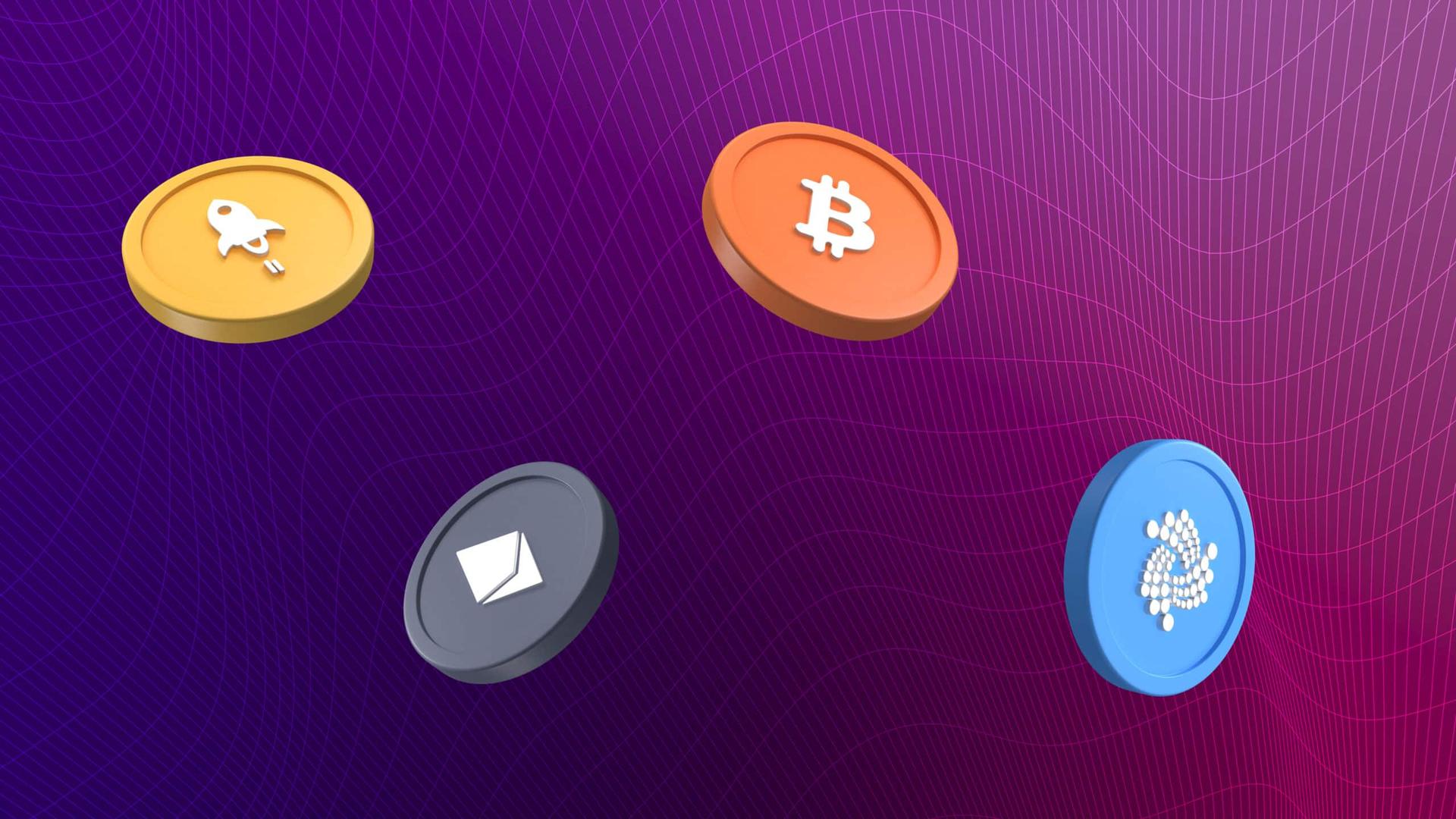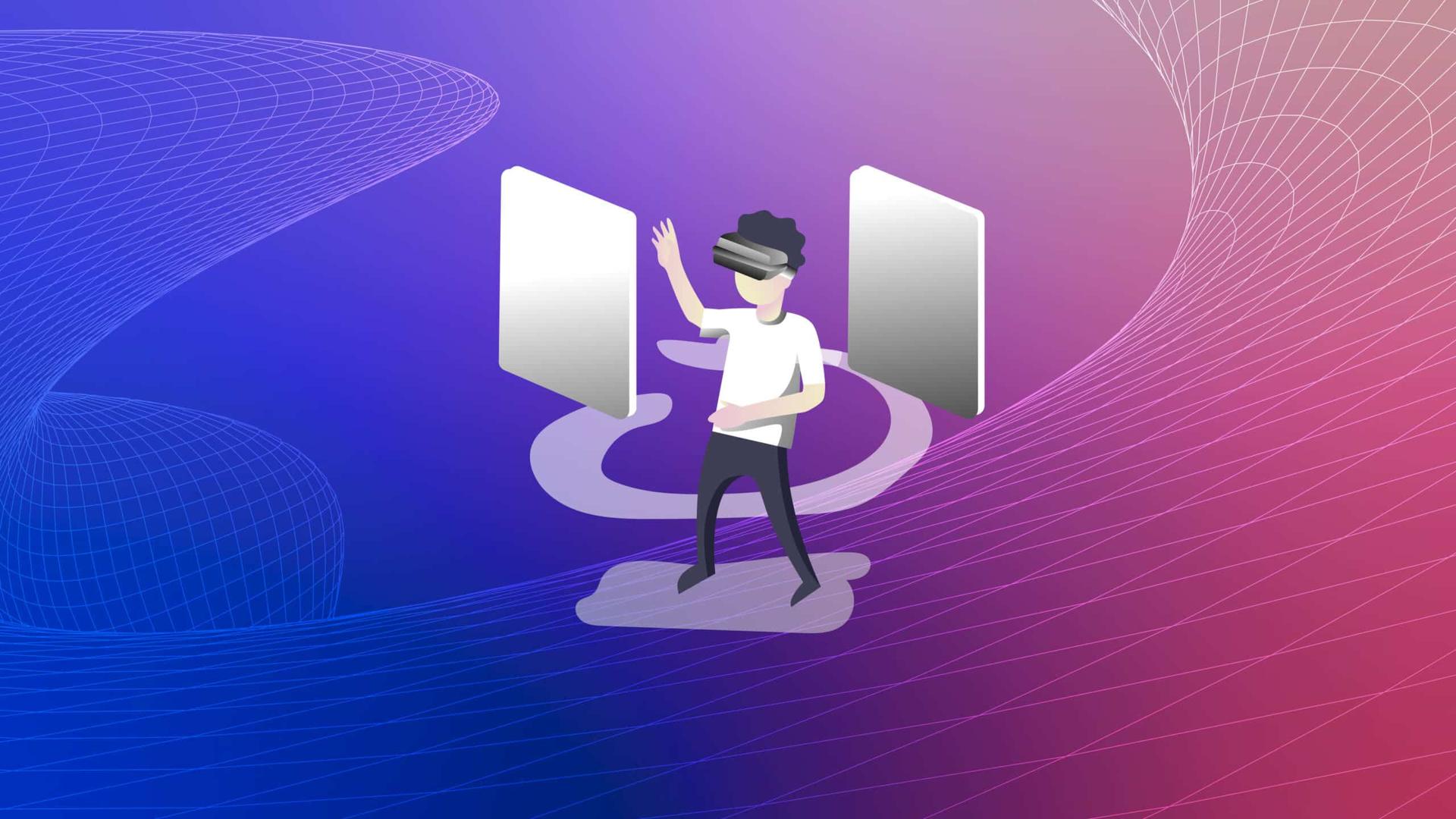Building a Metaverse: Tools and Technologies to Know

The metaverse, often described as a sprawling digital universe, is not a distant science fiction dream but a tangible reality taking shape before our eyes. Metaverse platforms create a space where the lines between the physical and digital worlds blur, offering limitless possibilities for connection, innovation, and exploration. To navigate this exciting terrain, one must be equipped with an understanding of metaverse development tools and the intricate metaverse technology stack that underpins this transformative landscape.
This blog post will guide you through this exciting journey, exploring the tools and technologies shaping the metaverse's future. We'll also delve into the pivotal role of blockchain in the metaverse, a technology set to revolutionize ownership and transactions within this digital realm. As we embark on this exploration, we'll unravel the mysteries of AR and VR in the metaverse.
Let Metastack be your guide through the exciting world of building a metaverse!
Historical Context of Metaverse Platforms
Metaverse never stops evolving. So, to understand what building a metaverse means and how to navigate it, we need to gain some historical context on metaverse platforms:
1. Early digital frontiers
Before the metaverse became a household term, the seeds of virtual environments were sown as primitive digital spaces. Compared to today's standards, these spaces were rudimentary but represented the earliest experiments in building a metaverse.
2. Emergence of VR and AR
The true catalyst for the metaverse's evolution came with the emergence of AR and VR in the metaverse. Virtual Reality (VR) and Augmented Reality (AR) technologies offered more immersive experiences and laid the groundwork for the metaverse platforms's future.
3. Pioneering virtual worlds
In the 2000s, virtual worlds like Second Life and online multiplayer games began demonstrating the potential of interconnected digital spaces. These environments were early precursors to today's metaverse platforms, fostering social interaction and content creation.
4. Building blocks of the metaverse
The metaverse technology stack began to take shape with the integration of cloud computing, high-speed internet, and advanced graphics. These components were essential for delivering immersive and interconnected experiences.
5. Blockchain's role
As the metaverse concept matured, blockchain's importance in the metaverse became evident. Blockchain technology brought transparency, security, and digital asset ownership to metaverse platforms, paving the way for digital economies within this virtual realm.
6. Future visions realized
Today, we stand on the threshold of the future of the metaverse. With a deep understanding of metaverse development tools and building a metaverse, we're witnessing the evolution of the metaverse into a dynamic, interconnected digital universe.
This historical perspective reminds us how far we've come. It is a testament to the endless potential for growth and innovation in the virtual world we now call the metaverse.
Core Technologies in Metaverse Development
In the world of metaverse development, we're dealing with some seriously cool tech that's not just for tech wizards but also creative minds, business folks, and enthusiasts. These are the game-changers:
Virtual Reality (VR) and its tools
Virtual Reality (VR) is the realm of immersive digital experiences, and developers have various powerful tools to bring these worlds to life. Here are some of the most prominent VR tools:
Known for its room-scale VR experiences, HTC Vive equips developers with a robust toolkit for creating interactive and immersive content.
Unity3D, a renowned game engine, extends its capabilities to VR development, providing developers with a user-friendly platform to build stunning VR applications.
Unreal Engine is another heavyweight in the game engine arena, celebrated for its exceptional visual fidelity and support for VR development.
Augmented Reality (AR) and its tools
Augmented Reality (AR) blends the digital with the physical, offering exciting opportunities for developers. These are some of the standout tools in the AR toolkit:
ARCore is Google's contribution to AR development, empowering creators to build AR experiences tailored for Android devices.
Apple's ARKit is the go-to framework for iOS app developers looking to integrate AR features seamlessly into their applications.
Vuforia is a well-known AR development platform celebrated for its image recognition and tracking prowess prowess.
ZapWorks simplifies AR content creation by offering user-friendly metaverse platforms that don't require coding skills, making AR accessible to a broader audience.
Blockchain and its relevance in securing digital assets
Blockchain technology is a cornerstone of the metaverse platforms, providing robust security for digital assets. Here's a look at how blockchain in the metaverse is shaping the future of media:
Ethereum, a leading blockchain platform, boasts innovative contract capabilities that ensure secure ownership and transactions within the metaverse.
Flow, a blockchain designed for gaming and entertainment, is a secure digital asset management solution vital for thriving virtual worlds.
Real-time 3D rendering and simulation tools
Real-time 3D rendering and simulation tools are the creative canvas for building immersive landscapes for metaverse platforms. Here are some indispensable tools:
Blender, an open-source powerhouse, empowers creators to design and animate 3D assets, making it a go-to choice for VR and simulations.
Maya, a professional 3D modeling and animation tool, is favored for its robust features, ideal for complex VR projects.
These introductory lines provide context and set the stage for exploring the significant metaverse development tools within each category, catering to the diverse needs of AR and VR in metaverse developers, blockchain enthusiasts, artists, and anyone venturing into the metaverse's immersive landscape.
Popular Metaverse Platforms
As the metaverse platforms continue to evolve, a diverse array of them have emerged, each with unique features, capabilities, and communities. This section will explore metaverse platforms like Decentraland, Roblox, and others that have shaped the metaverse landscape. Let's delve into the pros and cons of each:
Decentraland
Pros:
Decentralized ownership: Decentraland leverages blockchain in the metaverse to ensure proper ownership of digital assets within its virtual world. This aligns with the ethos of the metaverse and empowers users.
Creative freedom: Users can build, design, and monetize their virtual parcels of land. It's a playground for digital artists and developers to express themselves.
Blockchain integration: Blockchain plays a significant role in Decentraland's economy, allowing for secure transactions and the creation of rare, tradable digital assets.
Cons:
Learning curve: The platform's decentralized nature and reliance on blockchain in the metaverse may have a steeper learning curve for newcomers.
Limited accessibility: While Decentraland offers unique features, it might not be as accessible to users looking for more casual or gaming-focused experiences.
Roblox
Pros:
User-friendly: Roblox provides an intuitive platform that empowers users to create games and experiences with little to no coding knowledge.
Large user base: With a vast and engaged user base, Roblox offers developers a ready-made audience for their creations.
Economic opportunities: Developers can monetize their games and items, creating a thriving economy within the Roblox platform.
Cons:
Limitations in realism: While Roblox is fantastic for casual gaming and creative projects, it may offer a different level of realism than some Metaverse enthusiasts.
Centralized control: Roblox maintains significant control over the platform, which may raise concerns among those who prefer decentralized Metaverse environments.
Other metaverse platforms
Beyond Decentraland and Roblox, contribute to the Metaverse's vibrant ecosystem. These include VR-focused environments like VRChat and social spaces like Rec Room. Each offers unique experiences and opportunities for metaverse development tools.
Pros and cons of other metaverse platforms
VRChat: Known for its social VR experiences, VRChat excels in creating immersive user environments. However, it may require more VR hardware for full engagement.
Rec Room: Rec Room focuses on social and multiplayer gaming, making it an accessible platform for fun and collaboration. Still, it may not cater to users seeking more extensive creative freedom.
The metaverse is a diverse universe, each platform bringing strengths and challenges. Decentraland emphasizes decentralization and ownership, while Roblox prioritizes accessibility and a large user base.
Other platforms add unique flavors to the mix, catering to various preferences within the metaverse community. As we explore the future of building a metaverse, these platforms, alongside the underlying Metaverse technology stack, will play pivotal roles in shaping the digital worlds of tomorrow.
Challenges in Building a Metaverse
Building a metaverse is an ambitious endeavor with its challenges. As developers and creators venture into this dynamic space, they must navigate these obstacles to shape a vibrant and sustainable digital universe. Let's explore the key challenges:
Scalability
Scalability is a critical challenge in the metaverse. Metaverse platforms must handle increasing data, interactions, and content creation as user numbers grow. This requires robust infrastructure and efficient data management in building a metaverse. Developers working with metaverse development tools must address these scalability issues to ensure seamless experiences for users.
Interoperability
Different metaverse platforms, systems, and technologies must seamlessly work together for the metaverse to thrive. Interoperability is crucial to allow users to move freely between virtual worlds and experiences. Developers must establish common standards and protocols to ensure compatibility within the metaverse technology stack.
Security
Security is paramount in the metaverse as users transact, create, and interact within digital spaces. Integrating blockchain while building a metaverse can enhance security, but protecting user data, digital assets, and privacy is essential. Metaverse platforms must implement robust security measures and protocols.
Ethical Considerations
As the metaverse platforms grow, ethical considerations become increasingly important. Developers and creators must address issues like digital addiction, online harassment, and the impact of virtual experiences on mental health. Ethical guidelines and responsible design practices are essential for fostering a positive and inclusive Metaverse.
Navigating these challenges is integral to the future of the metaverse. Developers and creators working with AR and VR in the metaverse must collaborate and innovate to overcome these obstacles and create a digital universe that enriches the lives of its users while ensuring security, ethics, and seamless connectivity.
Future of Metaverse
The future of metaverse is an exciting frontier where developers in AR and VR, game creators, digital artists, entrepreneurs, and tech enthusiasts converge to shape the digital landscape. Let's glimpse what lies ahead of metaverse platforms:
Upcoming trends in metaverse development
Metaverse development is on the cusp of a transformation. Emerging trends include:
Metaverse development is on the cusp of a transformation. Emerging trends include:
Metaverse ecosystems: We'll witness the growth of interconnected metaverse ecosystems, allowing seamless transitions between virtual worlds and experiences.
Spatial computing: Spatial computing, blending the physical and digital realms, will become a cornerstone, offering more immersive experiences.
User-generated content: The Metaverse will thrive on user-generated content, where digital artists, designers, and creators will contribute to an ever-expanding virtual universe.
AI-driven realism: AI will enhance realism within the Metaverse, creating dynamic and responsive environments.
Integration with AI, IoT, and emerging technologies
The potential of metaverse platforms extends beyond their current boundaries. Integration with AI, IoT, and emerging technologies will:
AI-Powered NPCs: Game developers will introduce AI-driven non-playable characters (NPCs) that offer more lifelike interactions and experiences.
IoT in the metaverse: IoT devices will bridge the physical and digital realms, enabling users to interact with smart objects in virtual spaces.
- Blockchain-enabled economies: Entrepreneurs will leverage blockchain technology to create robust digital economies within the metaverse, revolutionizing ownership and trade.
Possible real-world applications and implications:
The influence of metaverse platforms will extend far beyond entertainment. Real-world applications and impact include:
Virtual workspaces: Businesses will adopt virtual offices and meeting spaces, transforming how we work and collaborate.
Education and training: Educational institutions and industries will harness the Metaverse for immersive learning and training experiences.
Healthcare and therapy: Virtual therapy and healthcare solutions will offer innovative ways to improve mental and physical well-being.
- Social impact: The Metaverse will bring people together unprecedentedly, fostering global communities and connections.
The future of the metaverse is a canvas of boundless possibilities. For developers of AR and VR in the metaverse, game creators, artists, entrepreneurs, and tech enthusiasts, it's an invitation to embark on a journey where imagination knows no limits.
Conclusion
While building a metaverse, the possibilities are endless. For developers of AR and VR in the metaverse, this is your canvas, your realm of creativity. Embrace the transformative power of metaverse platforms in this digital age. It's not just a new chapter; it's an entire book waiting to be written. Step into the metaverse, and together, let's craft the future of reality.
Explore Metastack's blog to learn all about the possibilities of the metaverse!



